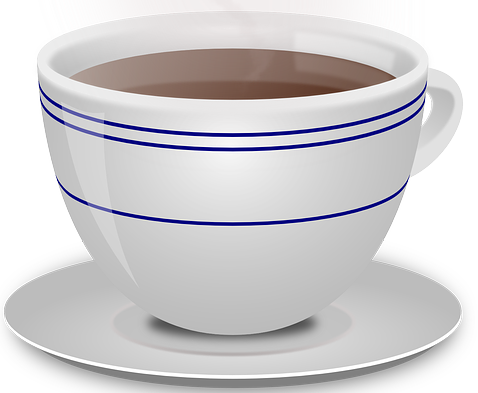TEA CUP
IDEAL BREWING TEMPERATURE: 100ºC/212ºF
| Amount | Mild | Medium | Strong |
|---|---|---|---|
| 1 heaping teaspoon of “The Perfect Measure Spoon” (Item# 11MS-1370-) | 2-3 minutes | 4-5 minutes | 6-7 minutes |
Steep Roots Recommends 4-5 minutes
| Amount | Mild | Medium | Strong |
|---|---|---|---|
| 1 heaping teaspoon of “The Perfect Measure Spoon” (Item# 11MS-1370-) | 2-3 minutes | 4-5 minutes | 6-7 minutes |
Steep Roots Recommends 4-5 minutes
| Amount | Mild | Medium | Strong |
|---|---|---|---|
| 1.5 heaping teaspoon of “The Perfect Measure Spoon” (Item# 11MS-1370-) | 2-3 minutes | 4-5 minutes | 6-7 minutes |
Steep Roots Recommends 4-5 minutes
TEA POT
IDEAL BREWING TEMPERATURE: 100ºC/212ºF
| Amount | Mild | Medium | Strong |
|---|---|---|---|
| 2 heaping teaspoons of “The Perfect Measure Spoon” (11MS-1370-) | 2-3 minutes | 4-5 minutes | 6-7 minutes |
Steep Roots Recommends 4-5 minutes
| Amount | Mild | Medium | Strong |
|---|---|---|---|
| 3 heaping teaspoon of “The Perfect Measure Spoon” (Item# 11MS-1370-) | 2-3 minutes | 4-5 minutes | 6-7 minutes |
Steep Roots Recommends 4-5 minutes
| Amount | Mild | Medium | Strong |
|---|---|---|---|
| 3.5 heaping teaspoon of “The Perfect Measure Spoon” (Item# 11MS-1370-) | 2-3 minutes | 4-5 minutes | 6-7 minutes |
Steep Roots Recommends 4-5 minutes

How to Steep Tea Mindfully
- Pay attention to the sound of the water heating and boiling in the kettle. Hear its bubbling and gurgling. Can you see wisps of steam coming from the spout? Does the kettle subtly shake from the movement of the water inside? Be open to your senses, rather than try to analyze what’s happening.
- Notice the feeling of being in your environment: your bottom’s contact with the chair or the floor, if you’re sitting down; the weight of your feet on the ground, if you’re standing.
- Pouring the tea, watch the colour of the water change as it meets the teabag. Be interested in the transformation from clear water to tea, and the tinkling of liquid as it fills the cup. When your mind wanders into thought, as it probably will, gently return your attention to sensing.
- Lifting the teabag out with a spoon, feel the touch of the handle against your fingers, and the weight of the bag dropping away as you tip it into the bin. Let yourself hear any related sounds, such as the opening and closing of the bin lid. Notice any tendency to do this on autopilot, and come back to present-moment sensing when you find you’ve drifted to distraction.
- If you take milk and sugar, be interested in how you feel as you reach for and add these ingredients to the brew. Do you really want them? How do you know?
- Notice the warming of the cup that contains the hot liquid. How do your hands feel as you hold it?
- Now, bring the cup to your lips. Be interested in how your hand and arm know how to move in this direction without you having to tell them consciously what to do.
- Take a sip of tea. Rather than gulping it down, see if you can let the taste tickle your tongue. Perhaps gently move the liquid around your mouth. Savor the taste—is it pleasant? Or perhaps you’d prefer it stronger or weaker? You don’t have to do anything about it (unless you choose to). Just be aware of your sensations and the liking or disliking of them. If there are thoughts, let them enter into and then pass through your mind without following them. Try to stay with the tasting. Notice without judgement any desire to rush the drinking, and any impatience that comes.
- When you decide to swallow the tea, notice how that decision is made. Is it a conscious choice, or does it happen automatically? Stay present to the swallowing, the reflex movements in the back of the mouth and the throat, the trickle of liquid down into the stomach. How does it feel to be swallowing?
- Notice how the liquid seems to disappear. Is there a point when the tea stops being separate from you? When and how do you recognize that moment?
- Pause now, noticing any feelings of irritation, or thoughts such as: Hurry up, I’ve got better things to do. Or perhaps a sense of peace or stillness enters you. If so, where do you feel it? Is it changing from moment to moment, or staying the same? Maybe there’s something else going on in your mind and body, perhaps unrelated to the tea-drinking, pulling you into thoughts of the past or the future. If so, just notice it. Whatever comes up in your experience is okay from the perspective of meditation—there’s no right or wrong thing to notice. Bring gentle awareness to whatever emerges. Becoming conscious of how much the mind wanders is a sign of growing awareness.
- Take a look around you, opening your eyes to your surroundings without buying into evaluations about them. Just be aware of any thoughts or feelings that come up.
- Now, return your attention to the cup of tea in your hand. (Has the temperature dropped?) Watch as you decide when to begin the process of taking another sip. Return to step seven, and continue drinking the tea until the cup is empty, or you decide to stop drinking. If the latter, be curious about what is prompting that decision. Has the tea gone cold, has the taste changed, is there an impulse to get on with your next activity? (If the latter, what does that feel like? Is there a place in your body where you feel it most strongly?) Whatever you choose to do in each moment, try to watch the experience from an engaged observer’s perspective.
You don’t have to follow these steps like a strict to-do list. The key is to open yourself to the spirit of the practice, sensing with gentle precision what’s happening, moment by moment, and coming back to sensing whenever you notice you’ve drifted into thought.
